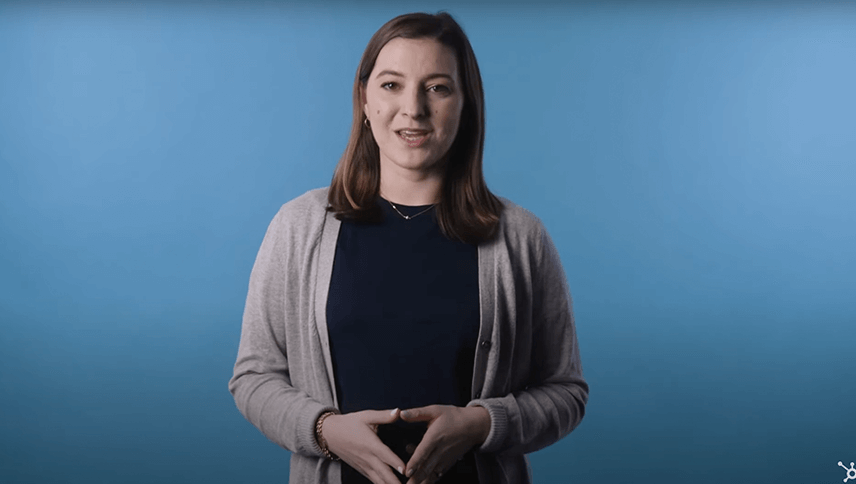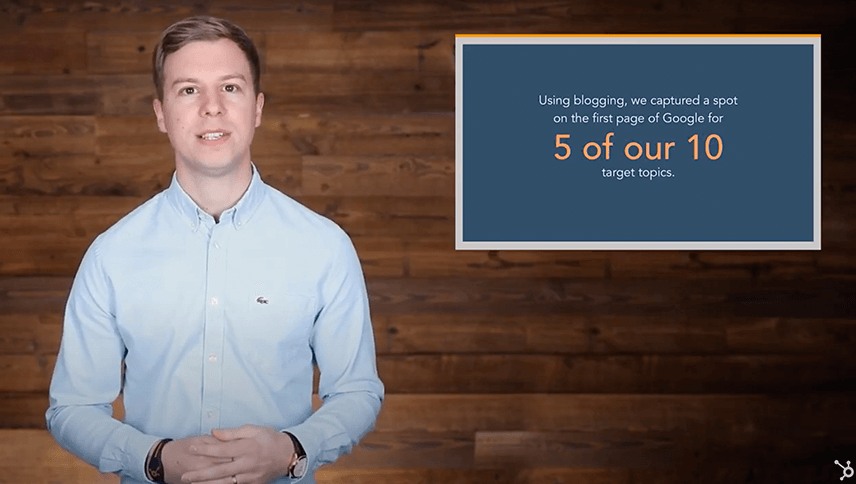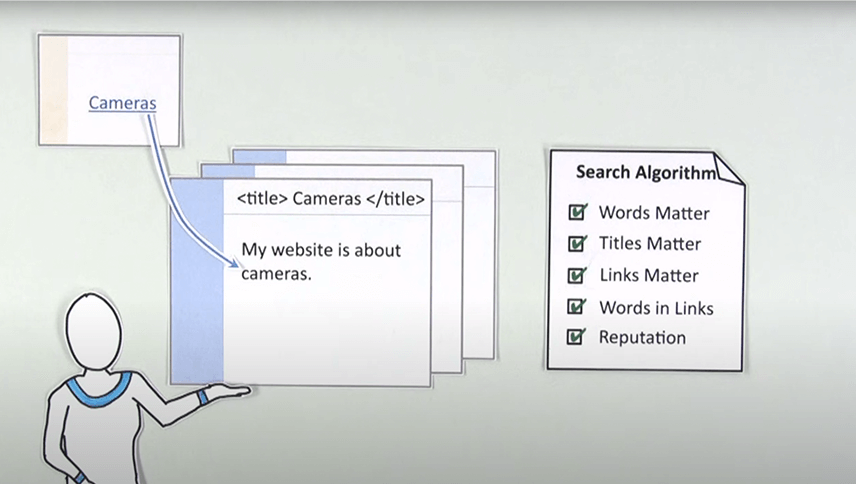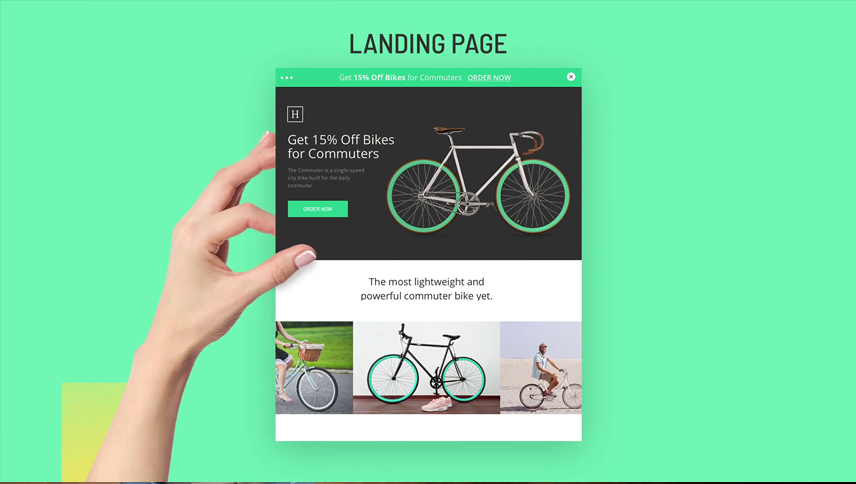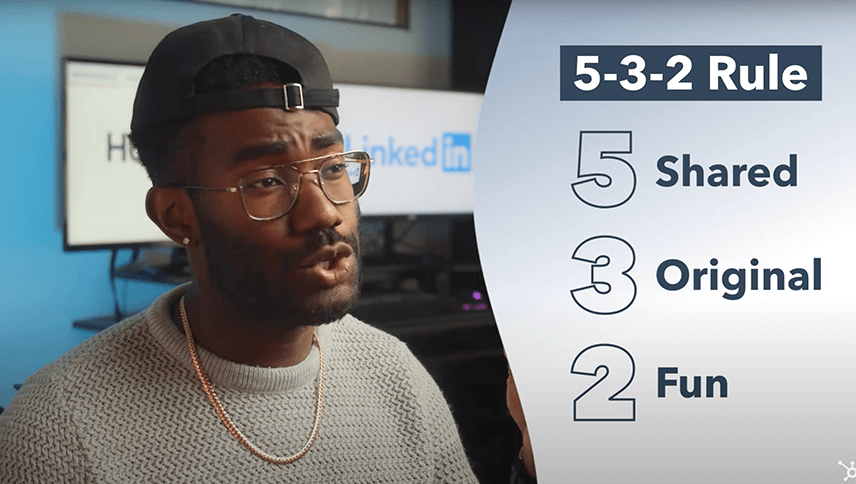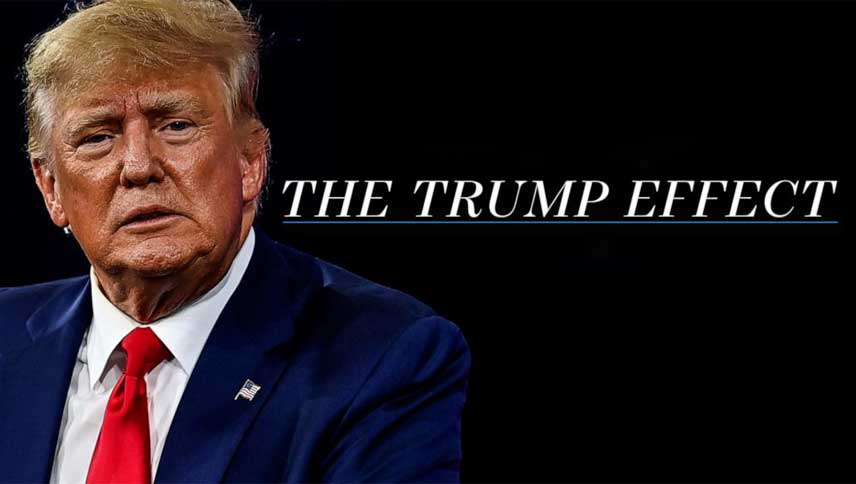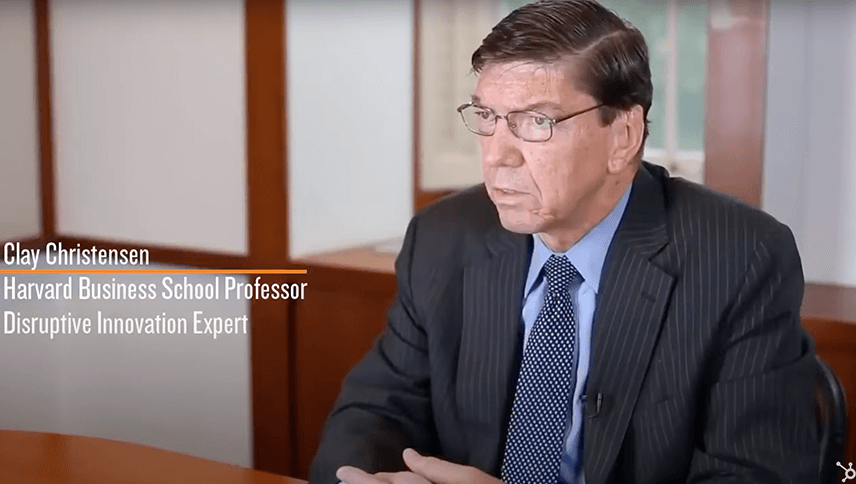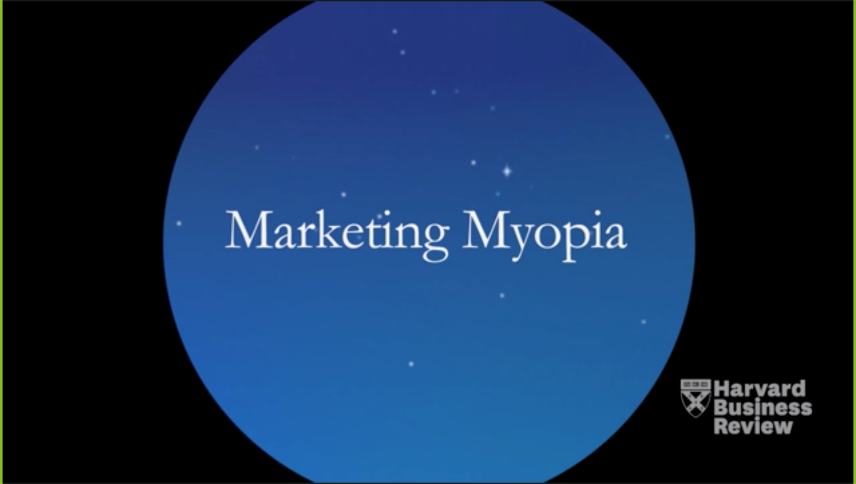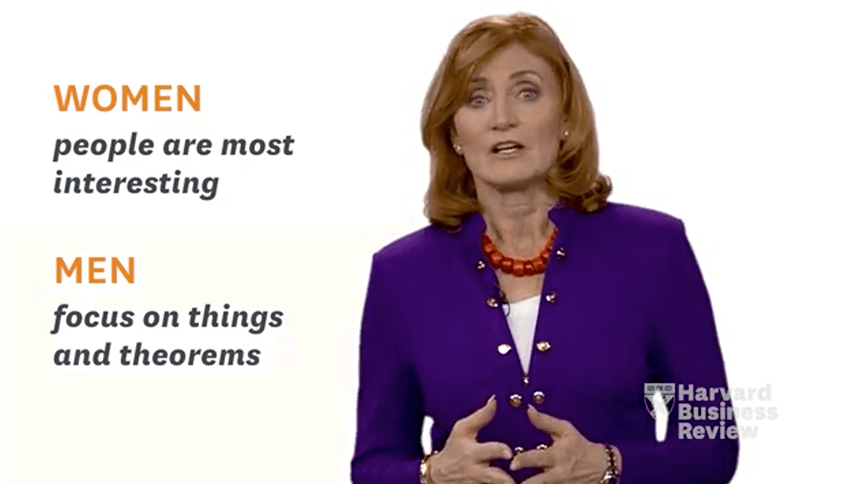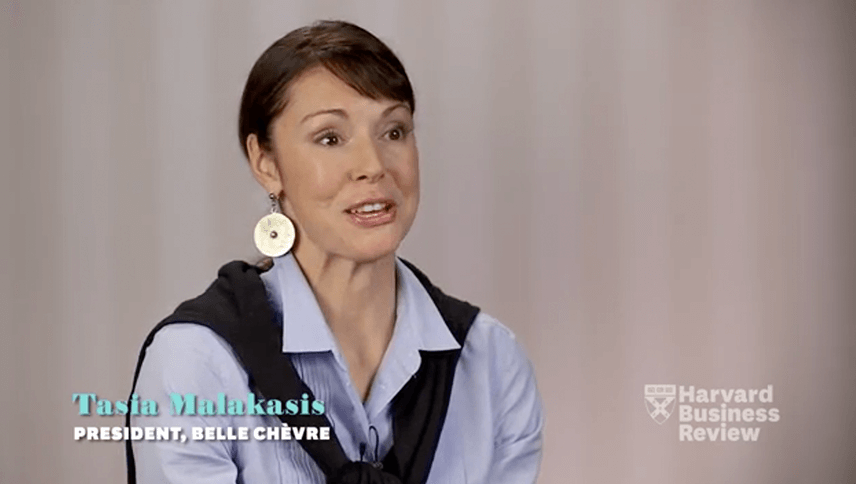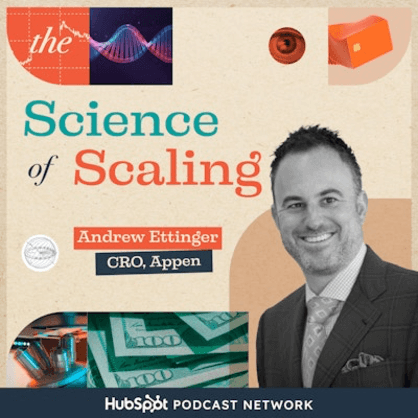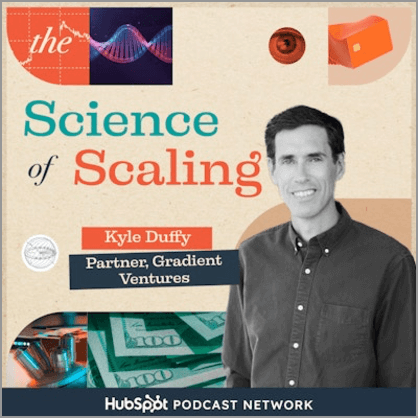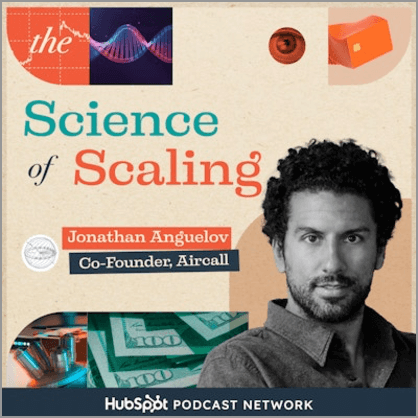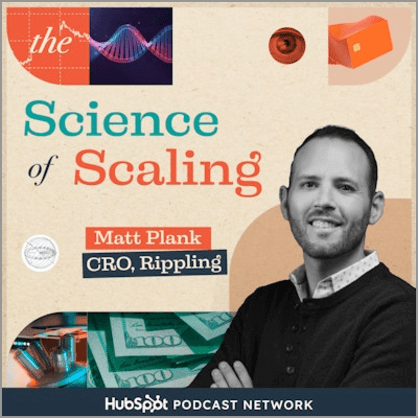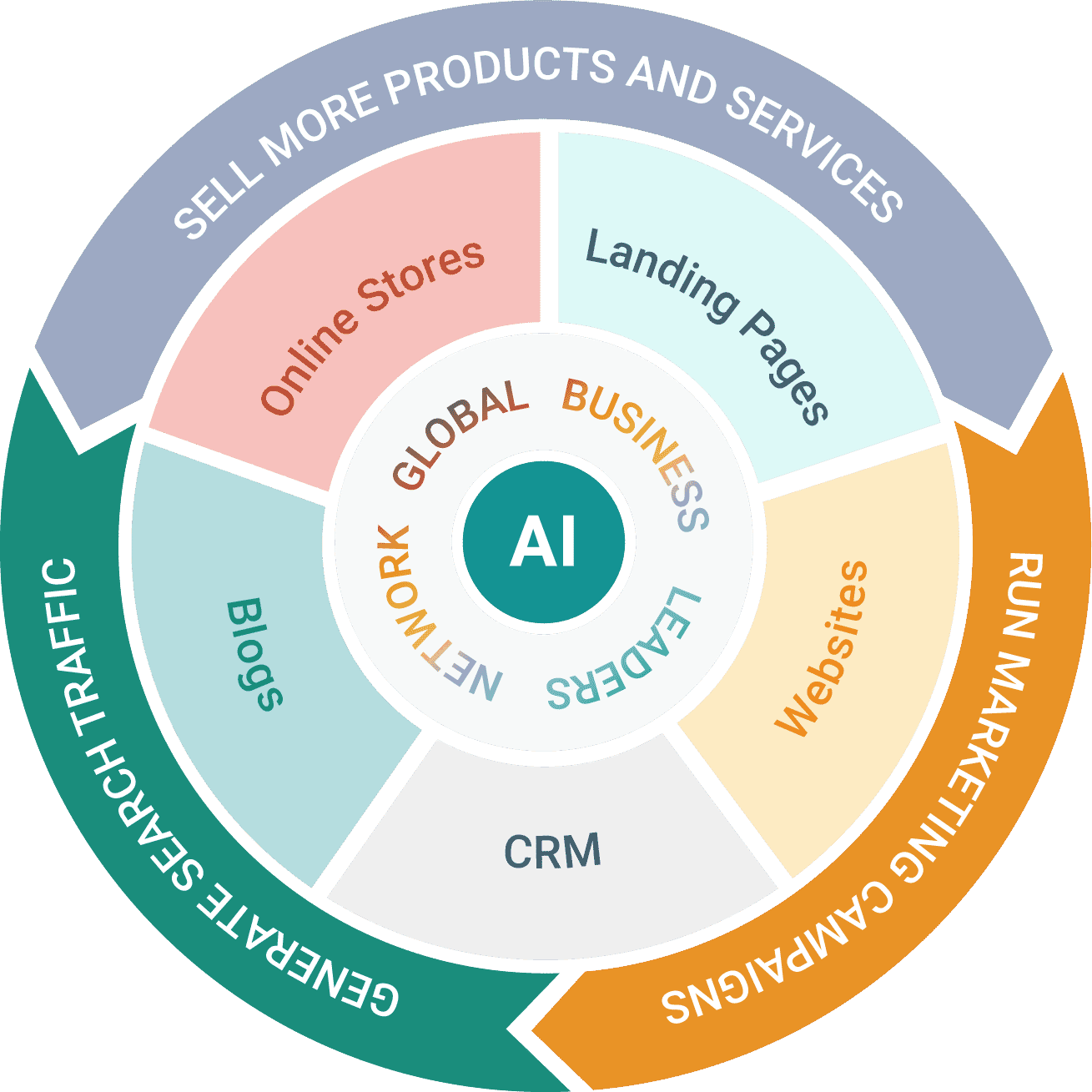What is Inbound Marketing Definition?
Masters in Marketing
Feb 4, 2020
HubSpot Video Presenter: Before practicing inbound, it’s important to understand the fundamentals of inbound success. Consumers don’t want to be sold to, they want to be educated, and inbound tactics can deliver the kind of information your prospects and customers need to help them make smart, well informed decisions and ultimately help them grow.
To do inbound, you need to be inbound. Here are four fundamentals to having an inbound business. Your company culture, your company buyer personas, the buyer’s journey, and your inbound tool stack. Starting first with company culture. A strong company culture is less about the perks and rewards. A culture of a company is the environment that defines and informs how employees act.
On behalf of customers and how the company hires retains and grows its people in the state of inbound 2017. We found that the executives who set the vision for their companies have very different perspectives on the state of their business compared to individual contributors tasked with executing on that vision.
Executives need a better understanding of the day to day challenges employees face, and employees need to communicate more clearly the roadblocks in the way of their success. Without clear communication and alignment, a company will struggle to build strong and lasting relationship with its customers.
At its core, inbound is all about being human. Inbound has huge applications for how you find and grow, recruit and retain your team. Your recruiting and growth process Both the candidate and the employee experience need to be inherently human, and that means being inherently inbound. Here’s Katie Burke, HubSpot’s Chief People Officer, on company culture
Katie Burke: and recruiting.
So to me, company culture is really about defining what makes your company and your organization tick. So it’s about your mission, it’s about your values, and it’s about the decisions that people make when no one else is around. So when I think about our culture at HubSpot, I think about really defining what is meaningful to us, what types of people succeed and thrive here, and the excellence that our customers can expect when it comes to our culture, our commitment to them, and how we make great decisions on their behalf every day.
At far too many companies, human resources is honestly a compliance tool, and the way that we think about people operations at HubSpot is that our employees are our customers. So when you’re running your business day to day, really think about designing not just a great customer experience, but also a great employee experience.
So the way I think about making our employee experience inbound is what do we actually know about you as a person? What do we know about you as a human being? Human. What do you care about? What drives you? What motivates you? And when you start designing people’s experience as employees around those details, all of a sudden you have an inbound experience that’s significantly more remarkable, and you have happier, more productive people who work on your team.
HubSpot Video Presenter: Your culture is part of the product that you offer, and the service and promise you make to your customers. It’s not something that you can set and then forget about. Inbound is about being human and that means having empathy and being adaptable. So rather than thinking about your employee experience as something you can avoid to wait and innovate on, think about it as a fundamental promise.
It’s your promise to your customers and to your business. And so
Katie Burke: when I think about what companies should do as it relates to their culture, the first thing I would do is measure it. The second thing I would do is ask your employees what they care about. Far too many executives think they have all the answers, and it turns out we don’t.
Employees know what’s important to them. They know what they were promised coming in the door. And so if you take the time to ask your employees what’s working and what isn’t and actually react to their feedback, you’ll have a winning culture that really helps you grow. Use
HubSpot Video Presenter: company wide anonymous surveys to collect this feedback.
Just like you might collect a Net Promoter score from your customers, you can collect an employee Net Promoter score. You can use this as a culture development tool. And this type of feedback doesn’t have to be anonymous either. If you’re a small company, you can have meetings and get this feedback in person.
Your company culture will help all of your teams or departments align together with the inbound philosophy. Several years ago, HubSpot published their culture code. The culture code is the operating system that powers the company. What’s been so helpful with HubSpot’s culture code is that it’s documented.
Let’s hear from Dharmesh Shah, HubSpot’s CTO and co founder, on documenting your culture code.
Dharmesh Shah: A culture is important. Uh, well, you’re going to have one whether you Right. A culture code of whether you write your culture down or not. Um, so our overall position is better to have a culture you want and like, and that attracts the kinds of people you want working in the company.
It’s also important, um, not just to have a culture, but to have it in a written form so you can communicate it out to people. It’s like, here are the kinds of people that will likely enjoy working here, um, that we think will be a success. So all the things that we know about building great product and, and, and, uh, um, building great, strong customer relationships, we can apply to to culture and internal teams, and that’s just as important, uh, who you build it with as is important, uh, as what you build, essentially.
HubSpot Video Presenter: If you’re not sure where to start with building a culture code, here’s a suggested framework. Start with your values, which should provide employees clarity on what is truly important for your organizational success, clarity on personal conduct, and what to expect from each other. I’m not exactly sure where to get started when creating values.
Well, here’s Katie Burke again with a few suggestions.
Katie Burke: The true litmus test of a company’s values are whether your newest and most junior employees can actually recite what they are and actually talk about how they take place in the workplace. If you’re not there yet, here’s an exercise for you to do.
Write down your company’s values and actually get input on what’s working and what isn’t. When you think you’re done, cover up the company name and ask yourself. Would this help a candidate differentiate you from one of your competitors? Would it help people understand what types of people grow your organization and thrive?
If not, you have to go back to the drawing board. Your values are what make your company uniquely you. So if they’re not unique, you have to actually innovate.
HubSpot Video Presenter: Why not try now? Can you list out your company’s values? Or maybe you’re looking for a job. Can you list out what values you look for in an employer?
As important as it is to know your company values, it’s also important to make sure that you know and can speak to your own personal values too. Another part of your culture code framework is your people. What should clarify potential employees you’re hoping to attract, and if that person will be a cultural fit?
A cultural fit doesn’t just mean you’re hiring all the same type of employee. Diversity and inclusivity go hand in hand with inbound recruiting. Take it from Katie Burke.
Katie Burke: So at HubSpot, as we grow, we have over 30, 000 customers globally. And that means our customer base is incredibly diverse in terms of what it needs from our product, our service, and our team.
As a result, we all know that diverse teams win, but it’s really important that as you’re growing your business, you think about the diversity of perspective, thought, gender, race, ethnicity, and sexual orientation of your employees. Because the reality is Building more inclusive products means building better products that help your customers grow.
HubSpot Video Presenter: Remember, helping your employees grow allows your customers to grow, which helps your business grow. Other parts of your culture code can be your policies to help establish the rules of conduct within an organization, outlining the responsibilities of both employees and employers, your benefits and career development.
Which outline the perks that warrant the greatest investment to not only retain talent, but also attract talent in a competitive marketplace and your workspace. Yes. The actual physical workspace. This is where people will be spending most of their time. So is it an environment that’s conducive to your company culture?
How so this framework is a good starting point for building out your You might not be in a position to create your company’s culture, and that’s okay. Make suggestions, ask questions, and be sure to confirm that your company’s culture aligns with you personally. You can always start by building a culture code for your individual team.
If you’re job seeking, be prepared to ask a company about its values, people, and policies. Build your own personal culture code to make sure you’re looking for something that aligns with your own values and skills. And even if you’re a team of one, these values are just as important to your customers as they are to your company.
Wouldn’t you want to invest your money or make a purchase with a company that you know is a good place to work, has clear values, know how they support their employees? Inbound is about being human, so make sure your recruiting and employee experience follow suit. Take the time to think through your company culture, and make sure that it’s truly as unique as your brand and your promise.
A solid company culture will help you make sure you’re recruiting and recruiting. Inbound professionals focus on hiring for character and training for skill. It doesn’t matter what type of business you have. You’re in the business of helping people in some way. Are you bringing people onto your business that really care about doing just that?
Another fundamental piece of an inbound business is the understanding and development of your company’s buyer personas. Since inbound is customer centric, you need to know who you’re trying to reach and who you’re trying to serve. You don’t want just any traffic to your site. You want the right traffic.
You want to engage with the right prospects and customers because those are the ones that will not only stick around, but also be evangelists for your brand. You want the people who are most likely to become leads and ultimately happy customers. So who are those right people? The right people are your ideal customers, and what we call your buyer personas.
It’s vital that your marketing and sales and customer service teams, really your whole organization, should have a shared vision of your ideal customer. You may have already given this some Maybe you have a list of common attributes that you know your ideal customer has. If you have that, you’ve developed an ideal customer profile.
An ideal customer profile is a great starting point for your persona development. But it isn’t a persona. Ideal customer profiles identify a category of people. And within that category, there are usually subcategories. And that’s where buyer personas come in. Buyer personas are semi fictional representations of your ideal customer based on real data and some educated speculation about demographics, behaviors, motivations, and goals.
Personas are created through research, analysis, and taking a close look at who’s already buying from you. They can help you get into the mindset of your potential buyers and create the right content. When you create the right content, you’ll effectively attract your ideal visitors, convert them into leads, and close them into customers.
They’re the glue that holds every aspect of inbound marketing, sales, and customer service together. Here’s Brian Halligan, CEO and co founder of HubSpot on the importance of buyer personas and how they helped HubSpot.
Brian Halligan: I think buyer personas are as important as ever. People talk a lot about them. When we were first starting HubSpot, we had different personas that were interested in HubSpot.
One we called Owner Ollie. And Owner Ollie, you know, it was a five person company. Ollie didn’t have any time to do any marketing. Uh, and he was just trying to do, deliver his product, let’s say. And it was oftentimes a services business. And Then we had another persona called Mary Marketer, and Mary Marketer was a marketer in a, it’s called 50, 100 person marketing organization, small marketing team.
But she marketed all day long. And both of these, both of these personas wanted very different things. Owner Ollie really just wanted HubSpot to do the darn marketing for him. Owner Ollie, if he wanted anything, wanted the world’s simplest product. He didn’t care about any analytics in the product. Uh, and he wanted just, uh, He wanted to do it for me.
He wanted us to do it for them. Mary wanted very different things. She was kind of a power user. She was growing more technical and sophisticated over time. She wanted analytics. She wanted great email marketing, great social marketing, great everything. And she wanted it all tied together.
HubSpot Video Presenter: Before Brian continues, I want to point something out.
Rewind back if you need to. Brian is constantly referring to these personas as real life people. He knows their wants and needs. He talks about Ollie as if he’s a friend and he knows his problems and what solutions might be best for him. That’s the key with buyer personas. Getting into the mindset of your potential customers.
All right, back to Brian.
Brian Halligan: We were trying to serve both. And at some point in time, boy, we’re trying to build products for both of them, the requirements for both were very difficult to solve at the same time. And the more we tried to solve for both, the less we served either. So at some point we said, we’re going to solve for Mary.
The future is Mary. It’s a company between five and, let’s call it, five hundred employees, with small marketing staff, growing business, and They want to, they want to be a big company someday. Let’s equip them with the tools and the knowledge they need. to really grow a modern go to market model. And that fed into our, by making that decision, our product organization could really focus there.
Our sales organization could focus there. Our marketing messaging could really focus there.
HubSpot Video Presenter: That’s a really powerful thing. If you can get your entire company talking about your Ideal customers in the same way. This will help marketers know the best marketing channels to use and the right content to create, to attract the right people.
This can help a salesperson know the right questions to ask during a sales presentation, or make sure you’re evolving your product to better service your customers. So how do you create buyer personas? There are three things to keep in mind. Research, identifying trends, and creating persona profile stories.
First, do your research. Buyer personas should be based off actual research, not assumptions. If any of those assumptions are inaccurate, your personas will be too. You don’t have to spend too much time here. You’re just trying to get a basic understanding of your ideal customer. When conducting research, there are a few questions that you can ask to develop your buyer personas.
One way to start is by asking different questions that touch upon their demographics, goals, and challenges. You can ask these questions to existing customers. And if you don’t have customers yet, ask people that you think would be the right fit for your product or service. Ask questions like, what is your job role?
Your title? What industry or industries does your company work or is your role in? What are you working to accomplish? What are your biggest challenges? How do you learn about new information for your role? Do you use the internet to research vendors or products? You don’t have to ask these questions word for word.
Make the questions specific to your industry so you’re getting specific answers in return. And you can ask these questions on the phone, in a survey, on social media. You might even have these answers already if you look through your CRM. A CRM holds All of this fantastic information about your leads and customers.
Maybe there’s common themes like your contacts, company size, or role that can help you understand common similarities. Just start collecting answers and always focus on the why or the motives of your buyer personas, not their actions. The followup question is to pretty much every question should be why, what really drives them?
How can you better serve them? People aren’t always good at describing this for themselves. So it’s important to dig deep. Uncovering their motives can lead to a truly powerful inbound strategy that aligns with what your prospects and customers are looking for. Inbound evolves because buying behaviors evolve.
So that means your buyer personas will need to evolve too. Be sure to revisit your personas from time to time. And once you’ve consolidated some research, start looking for trends, patterns, and similarities in inbound and outbound. Answers to research questions and indicate who your personas really are.
Start simple and start with a primary persona. You don’t need too many personas. That would be a lot of segments that you’d need to be marketing and selling and servicing and all right, you’ve done your research. You’ve identified those trends. The final step is to compile this research and create persona profile stories.
You want this story to contain information about who your persona is, and using information about their background, their demographics, and their goals and challenges. Have information that will help anyone in your organization better understand who you’re trying to help. Include common objections that they might have to your product or service, and use real quotes from your interviews.
After all, what better way to represent your persona than to use their own words? This will make it easier for your employees to relate to and understand them. The persona story is something that your entire organization can align behind. It’s something that new hires can review. So they know who they’re trying to market, sell, or service.
It’s a way that you can make sure you’re a song for the customer and having the customer voice in mind. If you know your customer. customers. Well, you can make sure that they’re always represented in everything that you do. Here’s Allison Elworthy, VP of customer success at HubSpot on how you can best represent your customer.
Allison Elworthy: It’s really easy for business to drift away from the customer, especially those who are in upper level management or at the executive level when you’re not interacting with customers on a day to day basis. Um, and what tends to happen is that you start to make decisions that are based either on On what’s best for your team or the enterprise value of a company and not not what’s best for your customer because you’re not interacting with your customers on a day to day basis.
Um, so there’s many ways in which you can solve for this. Uh, it helps out. We’re actually hiring for a voice of the customer role, which is really exciting. Um, but you can just continue to remind yourself. At every decision and conversation that you’re having and every business decision that you’re having, the customer should be at the center of what you’re trying to solve for.
Um, it shouldn’t be your bottom line revenue. The customer needs to come first.
HubSpot Video Presenter: When it comes to
Allison Elworthy: creating
HubSpot Video Presenter: a great inbound strategy, it’s not enough to know just who you’re trying to reach. You also have to know what purchase experience they’re looking for. That’s how you’re going to align everyone at your business around the customer.
Make the customer your number one focus and priority. That brings us to the buyer’s journey. Every interaction your persona has with your organization should be tailored to where they are in the buyer’s journey. The buyer’s journey is the active research process someone goes through leading up to a purchase.
Knowing your buyer’s journey for your persona will be key to creating the best content possible. Instead of talking about moving through the funnel, the buyer’s journey is tailored to your buyer and the stages. The three stages are the awareness stage, the consideration stage, and the decision stage that portray the experiences your potential customers go through.
You’ve gone through the buyer’s journey before. Everyone goes through it when looking to make a purchase. It’s the path you take when you have a problem to solve, and then you do your research on the potential solutions and make your purchasing decision. If you’re making a larger purchase for your business, it will clearly be a different buyer’s journey than if you were buying a commodity.
The awareness stage is when your prospect is experiencing and expressing symptoms of a problem. Or an opportunity. They’re doing educational research to more clearly understand and frame and give name to their problem. This is not the point that a prospect is now aware of your business. They’re now aware of their problem.
Maybe they’re ready to fire their existing process or know that their existing process just isn’t working yet. Your buyer persona should describe the stage as, I am a buyer, aware that I have a problem. So fill these in as if you were your buyer persona, to better understand your buyer at this stage. I need to improve, I need to prevent, blank.
I need to start, blank. I need to stop, blank. I need to optimize, blank. Blank. I need to solve. Blank. I need to learn more about. Blank. The terms that you start to insert are the phrases or keywords that your buyer persona would use to describe the awareness stage. During the consideration stage, buyers have clearly defined the goal or challenge.
They’ve given a name to it. And they’re committed to addressing it. They evaluate the different approaches or methods available to solve their challenge or capitalize on their opportunity. This isn’t the point that they’re considering your business. They’re considering the different solutions they have to solve their problem.
For consideration stage, your buyer would say, I am a buyer considering how to solve my problem. Fill these in as if you were your buyer persona. What tools are available for buyers? blank. What are blank industry solutions? What are my blank options? What blank options are there for blank? You’ll start to notice the terms used here are solution keywords.
You aren’t inserting your company name in here, but you might be inserting terms that you describe blank. As the solutions that you provide. Finally, in the decision stage, buyers have already decided on a solution strategy. They might create a list of specific offerings in their selected category and decide on the one that best meets their needs, or they might go with the solution they find first.
To get in the mindset of your buyer persona at this stage, you can use the following. If they say, I am a buyer deciding on a specific product and vendor, or I’m a buyer trying to make a decision between products and vendors. How would you fill these in as if you were your buyer persona? I need prices for blank.
I need blank product specifics. I need proof that blank works. I need evidence that blank. I need insurance that blank. Prospects, website visitors, or leads might interact with you for the first time in any of the different buyer’s journey stages, but you need to be prepared for each and every stage. The buyer’s journey is something marketing you.
Sales and customer services can use marketers can use the buyer’s journey to create different content at every stage. You’ll want to have content offers that answer your buyer personas problems, their needed solutions and content on your product or service. You can also use the buyer’s journey to segment and better nurture your leads to help make the best purchasing decision.
For sales, you can use the buyer’s journey to better understand how to sell to your prospects and help guide them through the buyer’s journey. If you know someone’s at the awareness stage, you’ll have a very different conversation with someone that’s, let’s say at the decision stage, and has already recognized possible solutions to their problem.
And for services, think of your customers as having their own type of buyer’s journey. When you’re looking to upsell, resell, or cross sell, You don’t want to send your customer back through an entire buyer’s journey. Use this as a way to understand what your customer journey looks like. Once you understand your buyer personas and their buying journey, it’s time to start using tools and tactics to do inbound.
Your inbound tool stack should consist of different tools that can align your entire customer journey. It’s not just customer service that will be using email, and it’s not just helpful to sales to have a CRM. And it’s not just marketing that needs reporting and data. The foundation that you’ll need is a CRM.
Remember, a CRM stands for customer relationship management. A lot of people think of a CRM being a sales tool. It is, but it isn’t just relevant to sales. Here’s Brian Halligan, CEO and co founder of HubSpot.
Brian Halligan: CRM is a confusing word. A lot of people think it’s, it’s software for salespeople, but it’s customer relationship management.
And I, I think it’s really, it’s a platform that you use to manage the entire customer journey. Uh, and that entire customer loop from marketing into sales into service and from happy customers into prospects. And how do you get that? You know, self reinforcing loop cranking in your business. It’s hard to do that if you’ve got one system for selling and one system for marketing and one system for service that don’t talk to each other, that don’t give context.
HubSpot Video Presenter: What makes a serum so powerful is because it’s a contact serum. database. A contacts database is central to every piece of your inbound business. You’ll use it to keep track of all the different people who have a relationship with your business, to personalize every interaction you have with them, and to attract more contacts like them.
Your contacts truly are the heart for every piece of your marketing, sales, and services strategy. Contacts are not just names and email addresses inside of a database, but individuals who you’re creating relationships with a constant reminder of why inbound is, and always will be customer centric. A contact is anybody, your company market.
Sells partners or engages with or employs when involving both marketing, sales and services in your contact strategy and having them use the contacts database, you’re creating alignment and consistency with all parts of your inbound strategy that your contacts are interacting with. You’ll also want to use different types of tools that best support the inbound methodology tools that will help you attract, convert, close and delight.
But if buying behaviors continuously evolve, so will the tactics and tools that you’ll use to reach them. That’s why HubSpot’s products are constantly evolving. It’s to always solve for the way people want to buy. Here’s HubSpot’s Senior VP of Product, Christopher O’Donnell, on how he thinks of inbound and technology.
Christoper O’Donnell: We’ve always stated that inbound is fundamentally About being human and helpful, the technological landscape is adapting to exponentially increase companies. Helpfulness through AI and machine learning. It’s not something to fear. It’s something to embrace as both a customer and a business. As a customer, you’re able to surface help and information you need faster and at your convenience.
As a business, you can automate the tedious details and have more meaningful conversations with your customers. How and when they want all of this allows you to have more time to do the things you love. It’s a win win.
HubSpot Video Presenter: If you’re going to do inbound, you need to get comfortable with change and be ready to adapt to the experience people are looking for when they’re trying to make a purchase.
As consumers, we’re now looking for convenience more than we ever have before. We’re looking for the most enjoyable experience. That’s why we’ve seen so many changes in technology. Take chatbots for instance, HubSpot’s co founder Dharmesh said, chatbots are the most important technology over the last two decades.
Here’s Dharmesh on how this technology ties into this inbound philosophy.
Dharmesh Shah: The reason, um, chatbots are interesting is, is because of the technology they use, which is called conversational user interfaces. And the reason they’re exciting is if you think about, uh, ever since the kind of dawn of software, for the most part, humans have been molding themselves to their software.
It’s like, Oh, I have to learn how. Photoshop works or how this particular application works and what conversational user interfaces allow us to do is essentially talk to our software, whether it’s through a messaging interface or through a voice interface. So for the first time now, software will adapt itself to how humans want to work with software versus the other way around.
And this is the first time as an industry. We actually have the technology to allow us to do that, where people can say, I want to get my traffic data for the last week or so, um, or, you know, tell me how many customers we signed up last month. And instead of saying, oh, I go to click here and click there and trying to get that answer out of the software.
You simply ask the software like a normal human would, and now software is getting increasingly intelligent. It has the ability to respond to those kinds of questions. Very exciting.
HubSpot Video Presenter: New tools and platforms have changed how organizations prospect and retain a customer. Today. Your entire company needs to be a part of delivering this great experience.
Once a company puts inbound ideas into practice, everyone in the company, from your CEO to product development, to marketing and sales and services, every single person in the company will be aligned around this inbound philosophy. Your company culture. And strategies required to deliver value to your customers.
All of those interactions need to match the buyer’s journey and what your buyer personas are looking for. The inbound movement is just getting started. The move to the future requires forward thinking ideas to be embraced and experimentation to figure out which channels work best for your business and an openness to try new technologies and tools to foster better relationships with your customers.
Source: https://www.youtube.com/watch?v=aPW8URBFe8o

